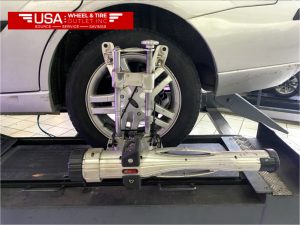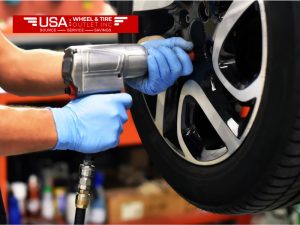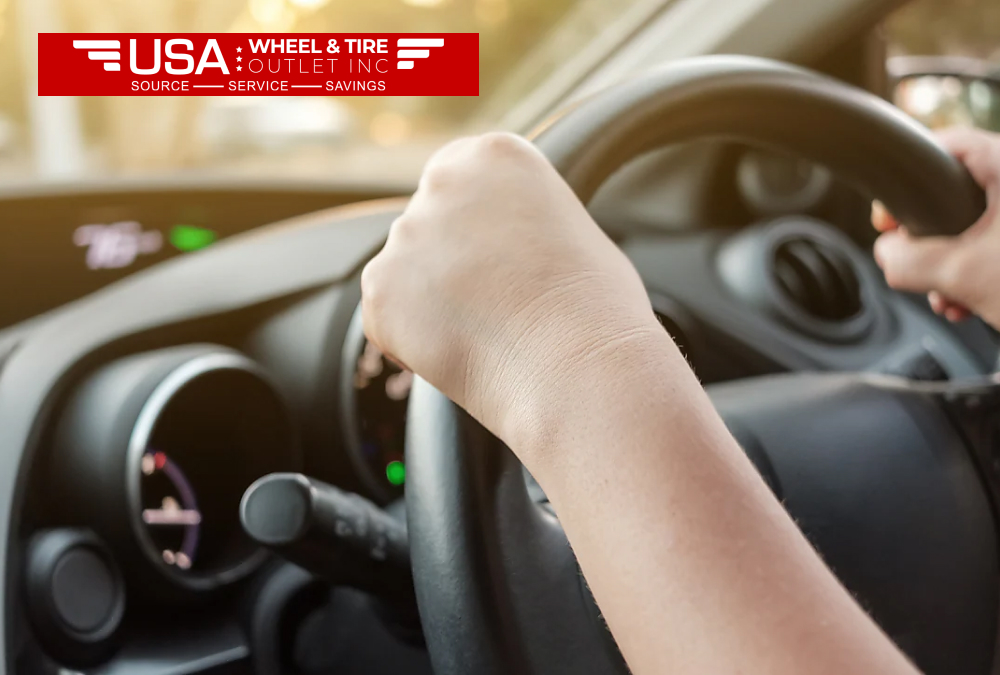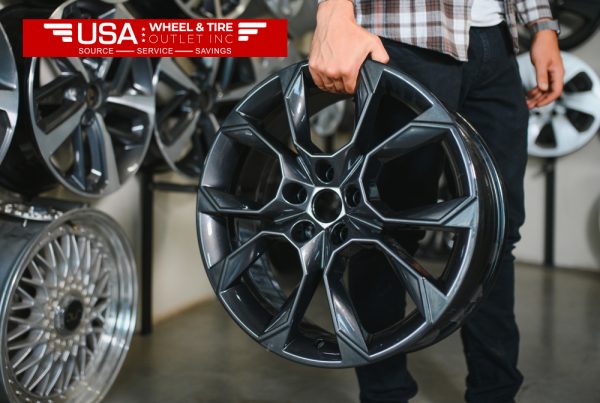Sitting on the road, hoping for a smooth drive; do you know how it happens? That is just a matter of the interaction of your car’s wheels with each other and with the roads. Wheels in motion are what ensure you safe and smooth driving. All of it, starting from the advantages of rotation of tires to alignment of the wheels, plays a crucial role in how your car does its job.
We’ll look at the ways properly maintained wheels can make your experience more enjoyable. We’ll talk about aligning your wheels and tires as well as the significance of having balanced wheels to ensure your vehicle is safe and efficient.
Understanding Wheel Alignment
Wheel alignment is the positioning of the wheels in relation to the car’s frame. Proper alignment ensures that the angle of the wheel is correct and parallel to each other. Misaligned wheels result in uneven wear on tires in bad handling and fuel consumption.
Why Is Wheel Alignment Important?
Correctly aligned wheels provide an enjoyable ride and very relaxing driving experience. Wheels that are not aligned properly can cause:
The wear of the tires is uneven. If the wheels aren’t properly aligned, tires wear unevenly and will end being replaced in a hurry.
Steering issues: Your vehicle is prone to pulling to one side, or even steering becomes more difficult due to the inconsistency.
Poor fuel efficiency: When one is misaligned, a lot of rolling resistance follows, and the engine takes much more effort, fuel consumption.
Handling becomes uneven: If the wheels of the car are not correctly aligned, it cannot properly maneuver.

Indicators of Misalignment
Identify these signs to know whether the tires of your car are asking for alignment.
Advantages of Tire Rotation
Tires deteriorate in another way and depending on the location in the car. Front tires usually degrade quicker than rear tires due to the weight of the extra load and the load due to the steering mechanism. Here comes tire rotation.
What is Tire Rotation?
Tire rotation is the process of moving the tires from one position to another so that they wear evenly.Regular tire rotation prolongs the life for your tire, enhances the traction of your tires, and increases their safety. safer.Benefits from Tire Rotation.

When Should You Rotate Your Tires?
The majority of experts suggest turning your tires at least every 6,000-8,000 miles. But, make sure to check the guideline for specific recommendations.
Balanced Wheels: The Foundation of a Smooth Ride
A properly balanced wheel is crucial to ensure a smooth ride.When your wheels are not balanced, they may vibrate and will make your car tire degrade faster. Balanced wheels spread the weight equally to all four wheels, hence ensuring stability and ride comfort.
Why is balancing the wheels so important?
Smooth Ride: The vibration can emanate from the unbalanced wheels primarily at high speed. However, when they are balanced, that problem disappears, and driving is smooth.
Longer Life for Your Tires: Balanced wheels do not wear unevenly, therefore your tires will last longer.
Better Handling: Whenever the car’s wheels have been balanced, it then handles better, which will make it safe to drive.
Stress on Components Reduced: Misaligned wheels may over stress the suspension and steering, thus requiring its repairing.
Symptoms of Unevenly Balanced Wheel
Will need wheel balancing if:
How Wheels May Continue to Roll Even When They Are Out-of-Square
Keep your wheels rolling by bringing them in for regular maintenance. Here’s how to be sure your wheels, tires, and suspension are in prime working order:
The Relationship Between Moving Wheels and Road Safety
Your car’s wheels are the back bone to safety. When the wheels are well-aligned, rotated, and balanced, you drive stably. If the wheels are properly maintained, you reduce the possible dangers of handling problems, blowouts, and so on, on the road.
How Wheels Impacts Safety
Handling and Control: Properly maintained wheels ensure better vehicle control, especially in accident situations.
Traction: The proper alignment of good tires in the wheels ensures better traction since they are aligned properly in the wheels. This way, the tires will make contact with the road surface with minimal chances of hydroplaning while driving on wet surfaces.
Braking Performance: The balanced wheels support even braking performance. This is because uneven braking is offered by the misaligned or out-of-balance wheels, particularly on high-speed roads.
How Wheel Alignment Affects Comfort While Driving
Wheel alignment is considered to be a very technical thing that happens when one thinks about vehicle maintenance. Its influence stretches far beyond the mechanics of your car. It significantly affects your driving comfort and overall vehicle handling. When your wheels are properly aligned, the car drives in a straight line without pulling to one side. That has two positive meanings: reduced stress on the car wheels from steering and less effort by the driver to keep going straight. Misalignment creates your car to drift and goes away in some direction, complicating turning process and controlling of a car.
Alignment and Driver Fatigue
Driving a car whose wheel is not aligned can be tiring in the long run. Maintaining the steering wheel steady to counteract the sideways movement of the vehicle can put extra strain on your arms, hands, and even on your back. It tends to make driving very tired and dangerous, especially while traveling long distances. Therefore, proper alignment of one’s wheels ensures the free movement of the car in the road and avoids stress on the driver.
Wheel Alignment and Tire Wear
The most common result of poorly aligned wheels is uneven tire wear. In such a situation, one side of the tire wears faster than the others. As a result, you are forced to change tires early, and that increases your overall maintenance cost. With properly aligned wheels, the tires wear out evenly, saving you money in the long run.
Tire Rotation and Vehicle Performance
Tire rotation hand in hand moves with wheel alignment so that your car can move at its best. Through regular tire rotation, it ensures that all tires will be worn out evenly since they change their positions on the vehicle. The front tires usually wear faster than the rear tires because they carry the weight of the engine and control it. Rotating tires can give more uniform wearing and tear that will help your tires last longer. Better handling with regular tire rotation. Tires that wear evenly help improve the handling of your vehicle. If the tires are worn unevenly they lose grip and the handling can become uncertain. This is especially risky in wet weather, when the proper traction is crucial to ensure safe driving. Regularly rotated tires offer consistent stability and traction and make your vehicle more flexible to steering inputs and more reliable during brakes.
Extended Tire Life and Cost Savings
Another advantage of tire rotation is you’ll be able to get a little more from your tires. Without the rotation process, the rear tires take long to get worn and hence you can end up buying them a little faster than you should. But making sure your four wheels will wear in an average process ensures they last as long as they should while increasing their life but reducing your pocketful expenses at the later years.
Why Wheel Balancing Is Important for Safety
Balance of the wheel is another important aspect of car maintenance that people often forget. If the wheels are balanced, it ensures that your weight on the wheel and tire is evenly spread. When the wheels are not in balance, in balance, you could possibly feel the vibrations of your vehicle, particularly at speeds that are high. Vibrations can be quite unappealing; they can also damage other components that make up your car, including the steering and suspension systems.
Vibration and Unbalanced Wheels
That is when you feel the vibration on your steering wheel, floorboards, and seats while driving. Probably, it is because your wheels need balancing. It will normally feel even more intense when the vehicle moves faster on the highways. Besides, such vibration is uncomfortable; in most cases, it also heralds a wheeling in need of balancing. More tire and suspension wear as well as in the steering system, accompanied by the increased cost of repairing parts over time, follows the unevenly balanced wheels that you drive on.
Avoiding Damage to Vehicle Parts
The imbalanced wheels will put more stress on the suspension system of your vehicle due to uneven weight distribution. This can cause the suspension components, like shocks and struts, to wear out faster and incur costly repairs. Regular wheel balancing keeps your suspension system and other critical parts healthy, making your car run optimally for a longer period.
Conclusion: Importance of regular wheel maintenance
Wheels in motion are very important for one to be able to drive without many bumps and hazards on the road. In other words, regular alignment, rotation, and balancing of your wheels ensure safety and reduce long-term costs; they don’t merely improve the performance of your vehicle. Improved fuel efficiency, handling, and long-lasting tires are a result of maintained wheels. Furthermore, maintained wheels prevent costly problems that might arise in other parts of your vehicle.
The good news is that all these benefits come without extra costs by just keeping your wheels maintained. This can be enjoyed by having a smoother ride, an efficient car, and safe driving. Proper alignments, timely rotations, and checks can be considered small investments with a great pay-off, as it extends the lifespan of your vehicle while ensuring you are safe on the road. Ensure that wheel maintenance is a priority so that your car will always be in motion and at its best.
Read Also: Comprehensive Guide to Car Fuel Types and Mileage
Frequently Asked Questions about “Wheels in Motion: The Key to Smooth and Safe Driving”:
1. What is wheel alignment, and why is it important?
The process of wheel aligning is the procedure of adjusting the angle of the wheels to meet the specifications of the manufacturer. This ensures you that your wheels stay aligned and straight with each other. Proper wheel alignment improves comfort while driving, prevents uneven tire wear, and enhances vehicle handling and safety
2. How often should I have my wheel alignment checked?
It is always recommended to check the wheel alignment once in 12,000-15,000 miles, or at least yearly. However, if you notice any signs of improper alignment, such as if your car is veering to one side, or if your tires have different amounts of wear. Check it out sooner.
3. What are some benefits of tire rotation?
The rotation of tires is important to ensure that the tires on the vehicle wear evenly. It is achieved by continuously changing the position on the wheels. This may help extend the life of your tires. It will also improve the grip of your tires, raise the efficiency of your car, and give you better control of your car.
4. How often must I change my tires?
Tires should be rotated at 6,000 – 8,000 miles. Still, check your owner’s manual for information from the manufacturer. Rotation prevents uneven wear on the tires and ensures their top performance.
5. What is the indication that my wheel needs balancing?
Some symptoms of unbalanced wheels include: there would be vibrations of the steering wheel, seats, and floorboards mainly in high speed. Other causes of imbalanced wheels may include the uneven tire wear and tension of suspension parts.
6. In what ways do balanced wheels improve driving?
Balanced wheels ensure even distribution of weight across all four tires, which reduces the vibrations and gives a smooth ride with better handling. The uneven strain on the suspension and steering systems of a vehicle is avoided, hence it becomes safer.
7. Is tire damage possible due to misalignment?
Yes, misalignment causes uneven wear to the tires, particularly on one side of the tire. This shortens the tires’ life and can increase the number of times they have to be replaced sooner, thereby increasing your cost of maintenance.





